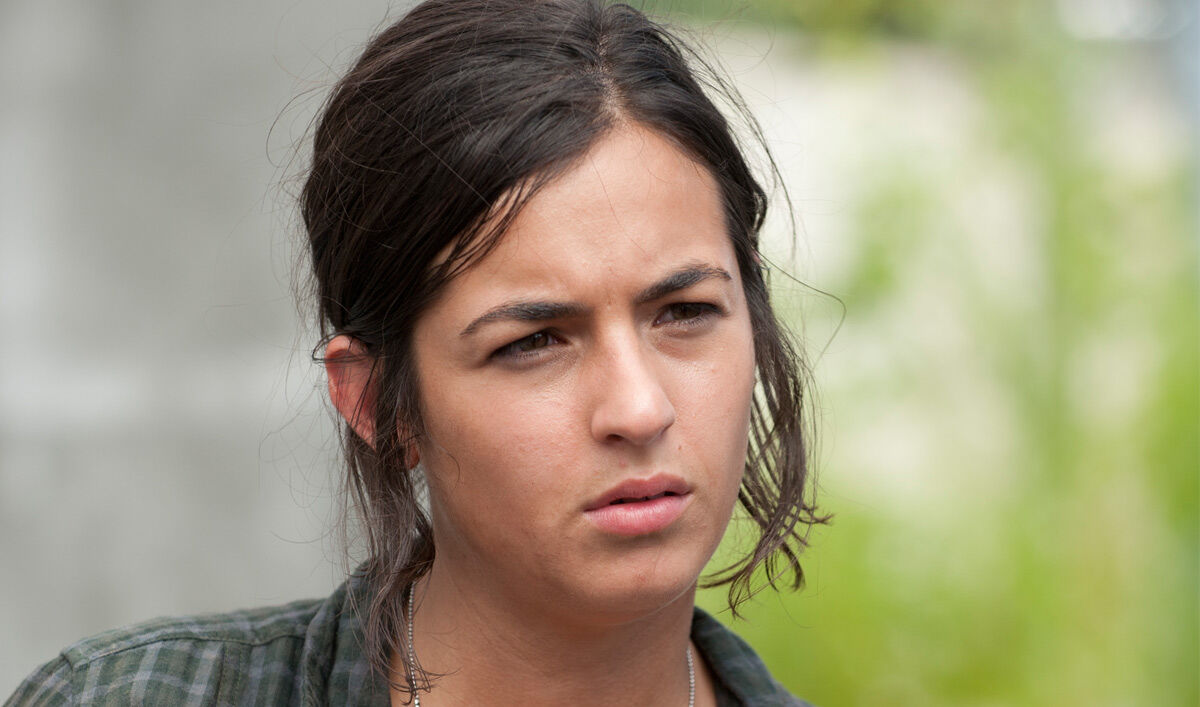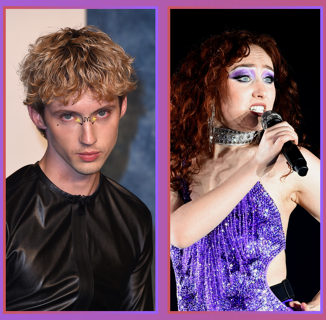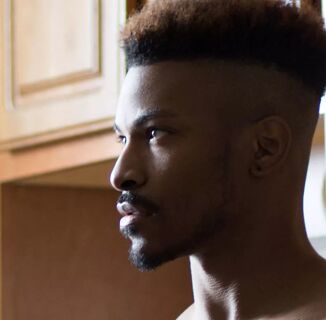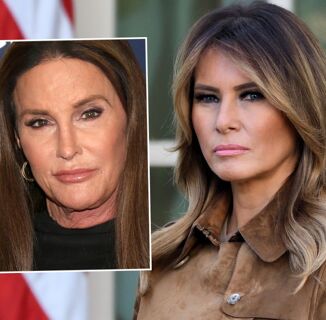For queer people, it can often feel like the end of the world. Whether you’re internally struggling with your sexuality or openly suffer abuse, LGB teens are almost five times more likely to commit suicide than their heterosexual counterparts and the rates are even higher for trans youth. However, when the actual end of the world arrives in apocalyptic movies and TV shows, the LGBTQ community is nowhere to be seen.
Does a decidedly non-biblical version of The Rapture float us all up to heaven or does the deadly threat at hand simply bury the gays first before moving onto the general populace? The answer is more complicated than that, but as always, the absence of queer people in dystopian stories of any kind ultimately boils down to representation, or a lack thereof.
Hungry For Acknowledgment
It doesn’t matter whether you take the red pill or the blue pill; The majority of apocalyptic movies erase the existence of LGBTQ characters in their entirety. Even dystopian classics such as Blade Runner and The Matrix fail to represent anything other than heteronormativity, and it’s wishful thinking to believe that removing queers from the equation is what made the world turn dark in the first place. Sometimes though, the absence of queer characters is sadly preferable to shoddy representation.
As one of the most prominent apocalyptic tales of recent years, The Hunger Games franchise is a particularly disparaging example of how not to include LGBTQ representation in a dystopian setting. After Katniss Everdeen is plucked from an overwhelmingly white rural town, she’s taken to the Capitol, a hedonistic wonderland where men and women alike wear foppish clothes and excessive amounts of makeup that bear more than a passing resemblance to the style of today’s drag queens. In this futuristic version of Sodom, our resentment of these evil oppressors is inextricably linked to the stereotypes of queer culture that they represent.
Another popular and arguably even hungrier take on dystopian fiction is the zombie genre, which was repeatedly used as a signifier for homosexuality following the ‘80s AIDS epidemic. Rather than include LGBTQ characters among the survivors, zombie movies symbolically draw direct correlation between gay people and the contagious undead who infect their victims through deadly bodily fluids.
Recently, a few exceptional films have begun to re-appropriate these tropes, most notably the zombie film Otto; or, Up with Dead People. Here, director Bruce LaBruce deliberately subverts the idea that queer people are a zombie-like plague by explicitly drawing parallels between his undead gay protagonist and the typical behavior of ‘regular’ teenage boys.

When it comes to the survivors, writers usually draw from a wide demographic to fully represent humanity in all its forms, except, of course, for queer people. Director Tina Romero hopes to change this with her upcoming movie Queens of the Dead, which will bring “glitter, choreography, queers & queens” to the apocalypse while drawing inspiration from the work of her esteemed father, the late director George A. Romero. It’s doubtful that this film will reach an audience beyond the indie circuit, which means that queer people are still nowhere to be seen in your typical Hollywood take on the genre.
The Wasteland Of Queer Representation On TV
Zombies and other apocalyptic tales don’t tend to fare much better on TV either, although the BBC did produce one notable exception back in 2013. While it only lasted for two seasons, In The Flesh received wide acclaim for its surprisingly sensitive portrayal of a young man called Kieren who’s been cured of the zombie virus and yet remains an outsider in his rural English town. As the show developed, Kieren learned to ignore the prejudice that he faced and grow more confident in his sexuality, exploring his feelings for another former zombie called Simon. In the Flesh was unusual though for pushing a queer protagonist to the fore and this may have sadly played a part in the show’s untimely cancellation.
In comparison, LGBTQ representation on TV’s biggest zombie show shuffles far behind In The Flesh. Sure, The Walking Dead included a number of queer characters in later seasons, some of whom quickly became fan favorites like Tara Chambler and Paul “Jesus” Rovia. However, Tara’s girlfriend Denise was killed off early on and Aaron also lost his boyfriend recently in Season 8, offsetting the positive LGBTQ representation with a disproportionate amount of suffering and death for these queer characters.
In the same month that Denise died on screen, three other queer female characters all bit the dust on their respective shows, including the high profile death of Lexa on The 100. Fans enamored of the sexually fluid relationship shared by Clarke and Lexa in the first two seasons were distraught when the writers succumbed to the “Bury Your Gays” trope and robbed them of their happy ending. The Twitter storm that ensued was even more devastating than the nuclear apocalypse that forced The 100 kids to leave Earth in the first place.
Even more recent dystopian shows that seemingly took a stride forward for LGBTQ representation are problematic too. In theory, Moira and Emily are two of the most resilient characters depicted yet in The Handmaid’s Tale. As fully rounded queer women, this pair are achingly real and therefore relatable for fans of the show, yet they also suffer more than Offred and anyone else in Gilead.
Moira eventually escapes the regime, but first suffers the trauma of forced sex work, and Emily is physically punished through genital mutilation after being forced to watch her lover be killed before her very eyes. LGBTQ representation in dystopian TV may be relatively better than what we see at the movies, yet queer characters on the small screen still suffer more than their straight counterparts, dying in disproportionate numbers.
From Dystopian To Utopian
The LGBTQ community has long shared a special relationship with music, finding both refuge and solidarity in the voices of our favorite artists. It’s fitting, then, that prominent queer acts have used their songs to address the absence of queerness in typical dystopian narratives by creating their very own.
The pansexual pop star Janelle Monáe threaded the story of a futuristic alter ego called Cindi Mayweather through every release, using this concept of an android on the run to openly explore oppression of “The Other.” Olly Alexander and his band Years & Years have developed a similar narrative to promote their next album, Palo Santo, where pleasure-seeking androids populate a genderless dystopian society in the future.
It’s in books, though, that queer people have become most visible at the end of the world. Much like film, classic dystopian novels rarely acknowledge the spectrum of sexuality, but things are changing. Gay writer Patrick Ness deliberately insinuated that the protagonist of his award winning “Chaos Walking” trilogy was raised by two fathers in a relationship. In a more recent novel called More Than This, Ness decided to make the lead outright gay and he did so without making it the overwhelming focus of the narrative.
Although he’s not the only author incorporating queer themes into his YA releases – Francesca Lia Block also comes to mind – Ness is one of the most successful and has therefore become instrumental in normalizing the use of LGBTQ characters within a dystopian narrative. Whether this translates to the upcoming Chaos Walking movie adaptation remains to be seen.
Ironically, music and books don’t rely on visual imagery to convey their message as much as TV and film do, yet it’s here that queer people are becoming most visible and in a positive way too, something which is particularly important for teen audiences who yearn to see themselves reflected in the things they love. Rather than be represented as the monster or erased entirely, the LGBTQ youth of today must be centered in apocalyptic narratives or the dystopian themes dramatized in these stories could soon become a personal reality for them.
Help make sure LGBTQ+ stories are being told...
We can't rely on mainstream media to tell our stories. That's why we don't lock our articles behind a paywall. Will you support our mission with a contribution today?
Cancel anytime · Proudly LGBTQ+ owned and operated
Read More in Culture
The Latest on INTO
Subscribe to get a twice-weekly dose of queer news, updates, and insights from the INTO team.
in Your Inbox














